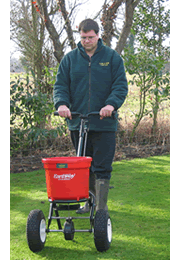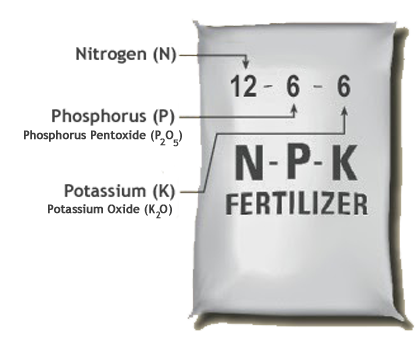Fertilising

Although your lawn may be growing well in early Spring, it is important to feed to use a fertiliser to feed it. This will produce a strong root structure which will also create strong blades of grass, keeping out moss and weeds. The bright green appearance will be maintained over the summer months and it will help the lawn to become resistant to disease.
A Spring/Summer lawn fertiliser will contain nitrogen for top growth and green grass. It is sold in granular and liquid form. Follow manufacturers' instructions for distribution on the lawn.
An Autumn lawn fertiliser will contain potash and phosphates. This produces strong roots giving your lawn a good start in the spring, helping to keep disease away. Apply to the lawn from September onwards, following the manufacturers' instructions.
Lawn fertiliser must be spread evenly, otherwise scorching to the lawn will occur. Application can be by hand lawn spreader or a mechanical lawn spreader which can be purchased or hired.
Wash out equipment well after use, as fertiliser can eat into the metal parts. Care must be taken when using the lawn spreader to ensure you do not miss any part of the lawn. By the same token, do not go over the same piece of lawn twice, as scorching will occur, resulting in patchiness.
Spread lawn fertiliser when the soil is moist, in the Spring time. It is important that your lawn fertiliser gets washed into the soil, so try and apply when rain is forecast. If no rain falls within, say, 3-4 days you will have to water the fertiliser using a form of irrigation. Usually a sprinkler system or a hose pipe will suffice.
A Liquid fertiliser can be applied with a watering can fitted with a rose. Take care to apply the fertiliser evenly over the lawn to ensure best results. You also need to take care not to double up by passing over the same lawn area twice. This will scorch the lawn, giving patchy results. Follow the manufacturers' instructions for the water/fertiliser ratio.
How to use fertiliser on your garden :
There are many ways to apply fertiliser to your lawn, and the method you choose will greatly depend on the product you are using. Here are some of the most common methods of application, along with examples of when you would use this method.
Top dressing: This is the application of a quick-acting fertiliser to the soil surface around plants to stimulate growth, and is usually carried out in spring at the start of the growing season. Take care to avoid leaf contact, which can cause scorching, and to protect against over application, which could cause root damage and pollution of ground water.
Base dressing: This is the incorporation of fertiliser into the soil or potting compost before sowing or planting.
Watering on: a Liquid fertiliser or soluble powders and granules can be dissolved or diluted and watered onto plant roots during the growing season to give them an instant boost. They are mainly used for feeding glasshouse crops, pot plants and bedding. The nutrients in liquid fertiliser are instantly available. Care must be taken to avoid leaf contact, which can cause scorching to the leaf and the lawn.
Foliar feeding: This is the application of a dilute solution of fertiliser to the leaves of plants, useful as an emergency treatment for correcting nutrient deficiencies or for providing quick supplementary feeding. The absorption of liquid fertiliser is greatest where leaf surfaces are tender, particularly on the under surfaces of leaves or on young leaves that are just expanding. Foliar feeds should not be applied in bright sunlight because the foliage and lawn may be scorched.
NPK Numbers Explained:
There are three main numbers on a fertiliser package which is known as the NPK value, guaranteed analysis, or fertiliser grade. This tells you the percentage of available primary macronutrients by weight in the package.
A bag marked 12-6-6 contains 12% nitrogen, 6% phosphorous and 6% potassium.
 |
(N) - Helps with leaf and stem growth
(P) - Used for flowering and root development
(K) - Used for fruiting, root growth and resistance to disease
|
Notes:
Always wear gloves when handling fertiliser and wear a suitable mask when spraying your lawn. Wash hands after use. Never smoke, eat or drink whilst working with fertiliser. Wash all equipment thoroughly after use.
Related Products: